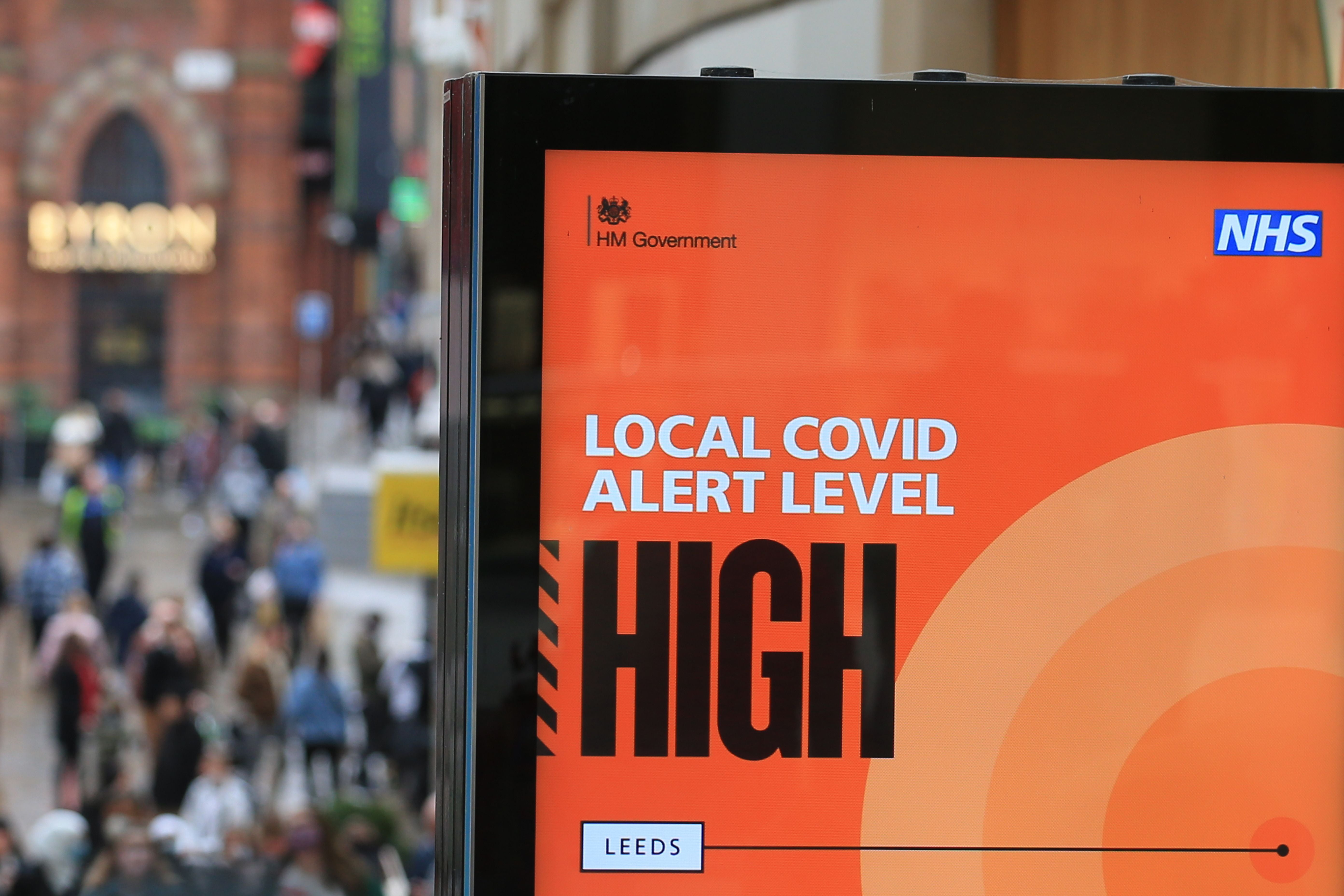When will the Covid tiers next be reviewed?
Boris Johnson says allocation of tiers will be reviewed every 14 days

Your support helps us to tell the story
From reproductive rights to climate change to Big Tech, The Independent is on the ground when the story is developing. Whether it's investigating the financials of Elon Musk's pro-Trump PAC or producing our latest documentary, 'The A Word', which shines a light on the American women fighting for reproductive rights, we know how important it is to parse out the facts from the messaging.
At such a critical moment in US history, we need reporters on the ground. Your donation allows us to keep sending journalists to speak to both sides of the story.
The Independent is trusted by Americans across the entire political spectrum. And unlike many other quality news outlets, we choose not to lock Americans out of our reporting and analysis with paywalls. We believe quality journalism should be available to everyone, paid for by those who can afford it.
Your support makes all the difference.England moved back to a tiered system of coronavirus restrictions with the end of lockdown on 2 December, with 99 per cent of the country placed under the two highest levels of limitations.
But when will the restrictions be reviewed and how have different tiers been decided on?
When will the system change?
Ministers were due to review the tiers for England on Wednesday afternoon, but a formal announcement of the outcome will not come until a statement to parliament on Thursday.
Any changes decided during the first of the planned fortnightly reviews will come into effect at one minute past midnight on Saturday morning.
The next review of the tiers will take place on 30 December.
Mr Johnson has written to Tory MPs offering them another chance to vote on the restrictions early next year, saying the legislation will have a "sunset of 3 February".
That vote after Christmas will determine whether the tier system stays in place until the end of March.
How many people are under tough restrictions?
More than 55 million people were placed into tier 2 and tier 3 measures on 2 December, meaning mixing between households indoors has effectively been banned for the vast majority of the country.
Millions more joined tier 3 on 16 December, in Greater London, parts of Essex and areas Hertfordshire — which were moved into higher restrictions ahead of the formal review amid surging coronavirus cases in recent weeks. It means 61 per cent of England’s population are now living under the harshest coronavirus restrictions.
Only the Isle of Wight, Cornwall and the Isles of Scilly – accounting for little more than 1 per cent of England's population – are in the lightest tier 1 coronavirus restrictions.
Areas such as Greater Manchester and Tees Valley are hopeful that their success in bringing down infection rates might be reflected in a move from tier 3 to tier 2, which would allow pubs and restaurants to open if they serve food.
But it is thought that ministers will be cautious about easing restrictions when Covid-19 cases are surging in some parts of a country and with fewer than 10 days to go before social distancing rules are relaxed for five days around Christmas.
What are the key indicators that will primarily determine the restrictions in each area?
Five factors are considered:
- case detection rates in all age groups;
- case detection rates in the over-60s;
- the rate at which cases are rising or falling;
- the positivity rate - the number of positive cases detected as a percentage of tests taken;
- Pressure on the NHS, including current and projected occupancy.
Downing Street declined to give any further details on the indicators, nor any estimate of the thresholds.
But – in the face of a possible Tory revolt – Boris Johnson has now committed to publish more data and outline what circumstances need to change for an area to move down a tier, as well analysis of the health, economic and social impacts of the measures taken to suppress coronavirus.
Why are there not rigid thresholds?
The government has said it needs to maintain flexibility to weigh the indicators against each other – such as whether hospital capacity in neighbouring areas is lower.
Another example given in the coronavirus winter plan is that case detection rates would need to be weighed against whether the spread of the virus is localised to particular communities.
The plan states "given these sensitivities, it is not possible to set rigid thresholds for these indicators, as doing so would result in poorer quality decisions".
What are the scientists saying about the prospect of easing measures?
Healthcare professionals and health journals have warned against easing the measures, with some saying doing so would be a “terrible mistake”.
Two leading medical publications - the British Medical Journal and Health Service Journal - warned that relaxing restrictions would “cost many lives” and urged the government to rethink the five-day period.
Peter Openshaw, professor of experimental medicine at Imperial College London, said it would be a "terrible mistake" to relax restrictions just months before vaccines "start to have an effect".
Prof Openshaw, who is a member of the New and Emerging Respiratory Virus Threats Advisory Group (Nervtag), said: "We scientists are very concerned indeed about relaxation of precautions at this stage. The rates are still too high, there's too many cases coming into hospitals, too many people dying.
"And if we take the brakes off at this stage, just when the end is in sight, I think we would be making a huge mistake."
PA



Join our commenting forum
Join thought-provoking conversations, follow other Independent readers and see their replies
Comments